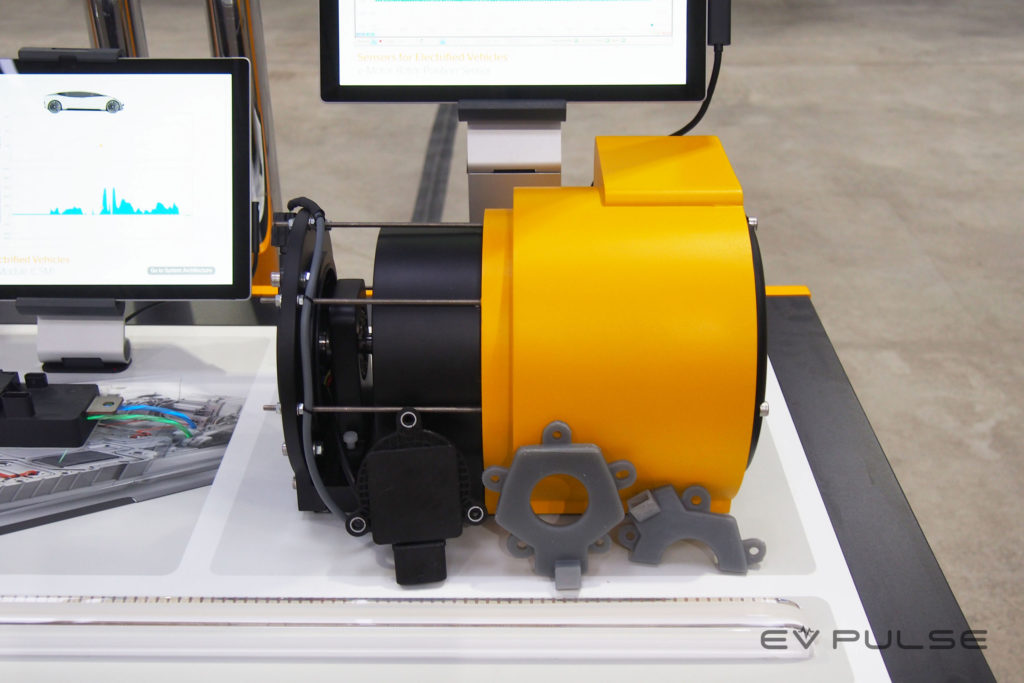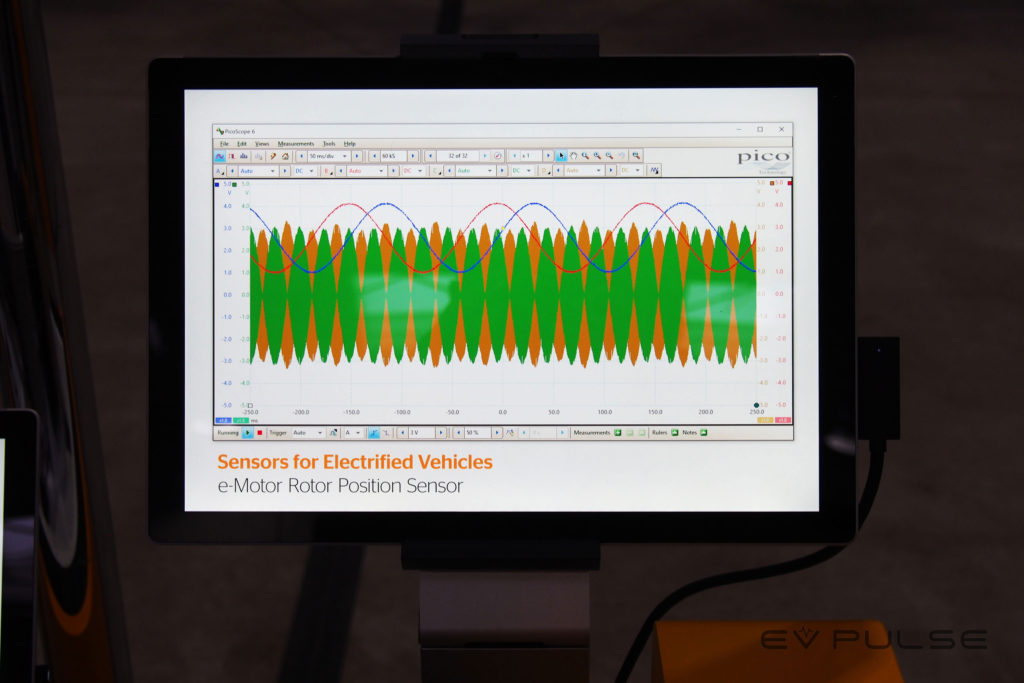Engineers at Continental have developed a new type of rotor sensor for electric motors. Their design is smaller, lighter and much more accurate than competing solutions currently on the market.
SEE ALSO: Continental’s Electric Corner Module improves EV efficiency, serviceability and even maneuverability
“The advantage that you have over a typical resolver or encoder, typically those are much larger, much heavier and in relation a lot more expensive,” said Sam Azuz, systems supervisor at Continental. Thanks to its smaller footprint, this new design is far more versatile. “It could be mounted on the back of the motor as a cap with a seal, which takes away two components and reduces it into one,” explained Azuz. “It could be mounted through-shaft, we can remake the cap, and it can be mounted as a segment of the side of the shaft [to provide] the same reading.” This gives automakers loads of flexibility as to where the sensor gets mounted, making it easier to package everything into a vehicle, even small ones with limited space.

Aside from being smaller, lighter and more affordable, Continental’s new design is also boasts of efficiency and precision improvements. Azuz said their rotor position sensor has greatly reduced power needs and, “It is accurate within about a quarter of a degree,” which is twice as precise – if not more – than competing systems available today. This design is also robust enough to work at speeds up to 30,000 rpm and it’s IP69K rated, meaning the sensor should be completely resistant to water, dust, dirt and other contaminants.
While driving, more accurate rotor sensing provides several important benefits, chiefly to efficiency and performance. Azuz said that in snow or ice, for instance, this system can respond to wheel slip and activate the traction control system much faster, “It would provide a quicker, more-accurate response.”

Beyond all that, Azuz also said, “And obviously, the biggest advantage, which is typically understated, is the efficiency of the battery, because if you do not need to drive it as fast or as hard it is less energy that is consumed.” He added, “You need to know how much torque to apply at what sort of driving speed,” and knowing with great precision how fast you’re moving between certain rotations can improve overall vehicle efficiency, though when asked to quantify this claim Azuz said it’s hard to give an estimate because there are so many variables.
MORE GREAT TECH: High-tech drum brakes could improve EV efficiency. Yes, drum brakes
Regardless, Continental’s new electric motor rotor position sensor can improve the safety and efficiency of EVs while lowering automaker’s component costs, which is a win-win for everyone. The technology is not currently available in any vehicles you can purchase, but Azuz said, “This … should be out within the next year or two.”

